For every web application – login & registration must be a needed part. Inside this article we will see Laravel 9 Authentication scaffolding with Breeze. We will do Laravel authentication with breeze.
Laravel founder Taylor otwell released laravel breeze with simple authentication scaffolding. Inside this we will see composer package for breeze. It was initially released with laravel v8. Also we have other packages for authentication as well.
Laravel Breeze is powerful combination by Blade templates and Tailwind. It publishes controllers for authentication system, views and routes to laravel application.
Learn More –
- Laravel 9 How To Connect Multiple Database Connections Tutorial
- Laravel 9 How to Create Custom Blade Directive
- Laravel 9 How to Create Custom Log File Tutorial
- Laravel 9 How to Create Custom Route File Tutorial
Let’s get started.
Laravel Installation
Open terminal and run this command to create a laravel project.
composer create-project laravel/laravel myblogIt will create a project folder with name myblog inside your local system.
To start the development server of laravel –
php artisan serveURL: http://127.0.0.1:8000
Assuming laravel already installed inside your system.
Create Database & Connect
To create a database, either we can create via Manual tool of PhpMyadmin or by means of a mysql command.
CREATE DATABASE laravel_app;
To connect database with application, Open .env file from application root. Search for DB_ and update your details.
DB_CONNECTION=mysql DB_HOST=127.0.0.1 DB_PORT=3306 DB_DATABASE=laravel_app DB_USERNAME=root DB_PASSWORD=root
Install Breeze
We need to Install laravel breeze package for the authentication. Open Laravel project to terminal and type the given command.
$ composer require laravel/breeze --devWhile Installation, this will be the screen we get
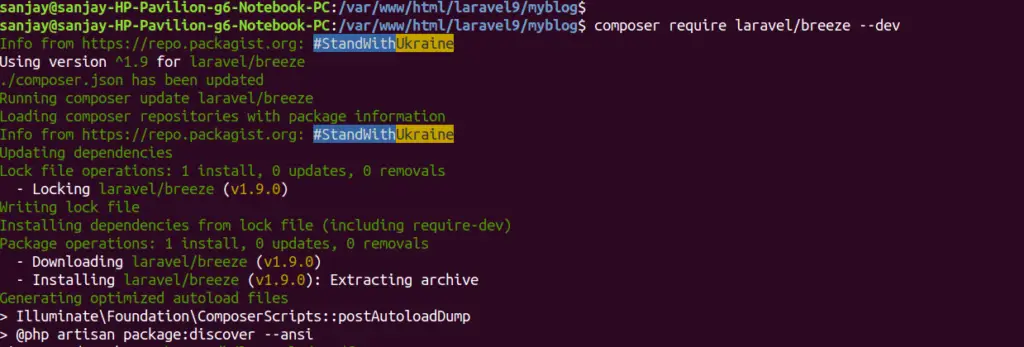
It will install breeze to application. Now, to install laravel breeze for simple auth scaffolding.
$ php artisan breeze:installAfter this command need to run the command
$ npm install && npm run dev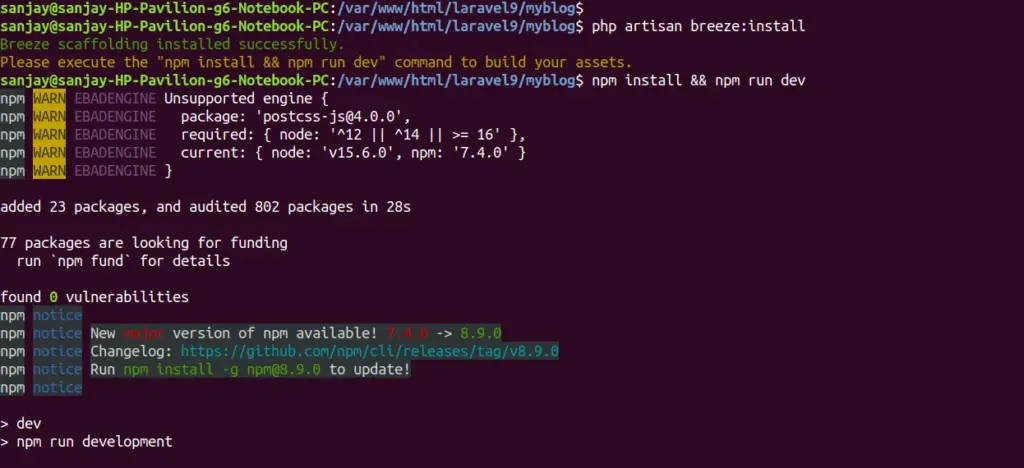
It will generate CSS and JS compiled files for authentication system. After running this, all controllers, routes, views we can find into source code of laravel application.
Run Migration
Next,
We need to run migration command to generate tables in database. Open terminal and run this artisan command.
$ php artisan migrateBreeze Authentication Controllers
After installation of breeze authentication – You can find several auth related files in your application Like it’s Controllers, Route, View Files.
Authentication controller we can find into the path /app/Http/Controllers/Auth
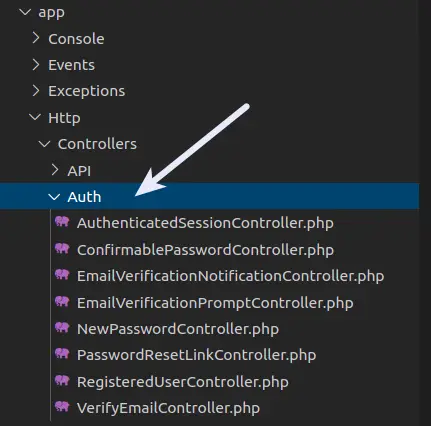
Breeze Authentication Routes
Application routes configuration we can find into the directory /routes.
Breeze authentication routes, we will find inside auth.php.
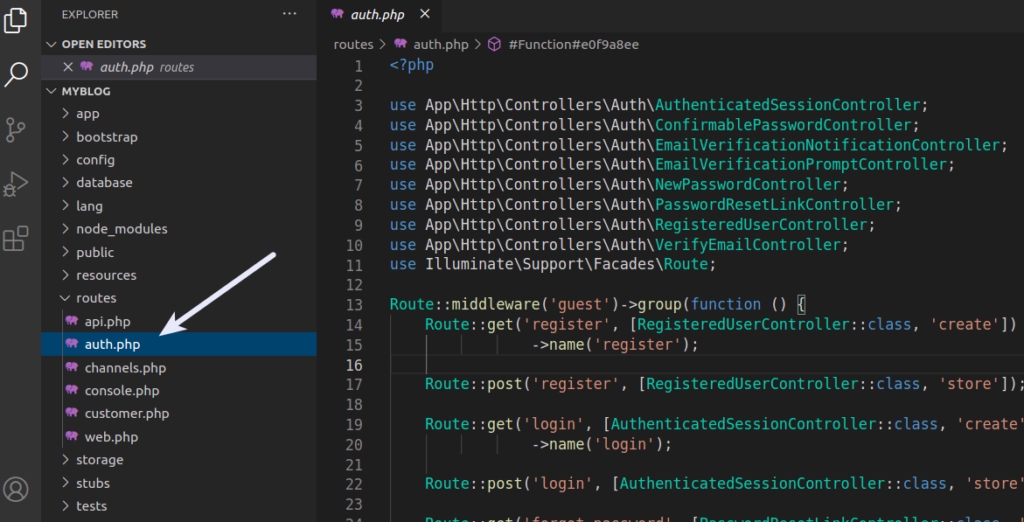
This auth.php file is included in web.php i.e main configuration file for routes. Have a look.
web.php -> require DIR.’/auth.php’;
Breeze Authentication Views
Blade template files after generating breeze scaffolding we can find inside path /resources/views/auth
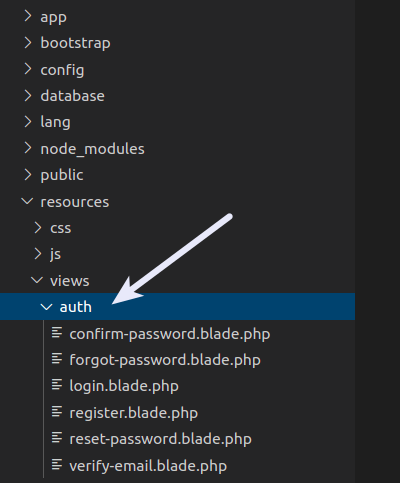
Application Testing
Run this command into project terminal to start development server,
php artisan serveURL – 127.0.0.1:8000
Login & Register link at landing page
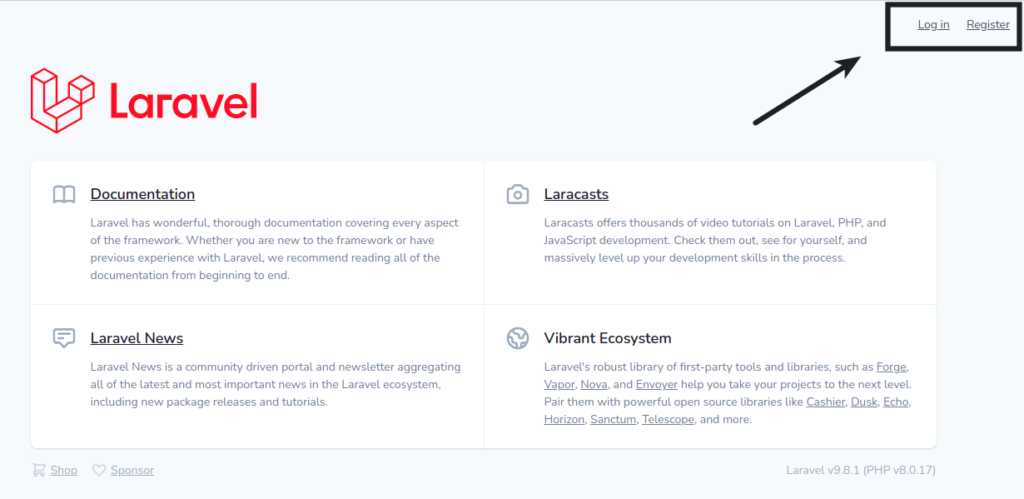
Register Page
URL – 127.0.0.1:8000/register
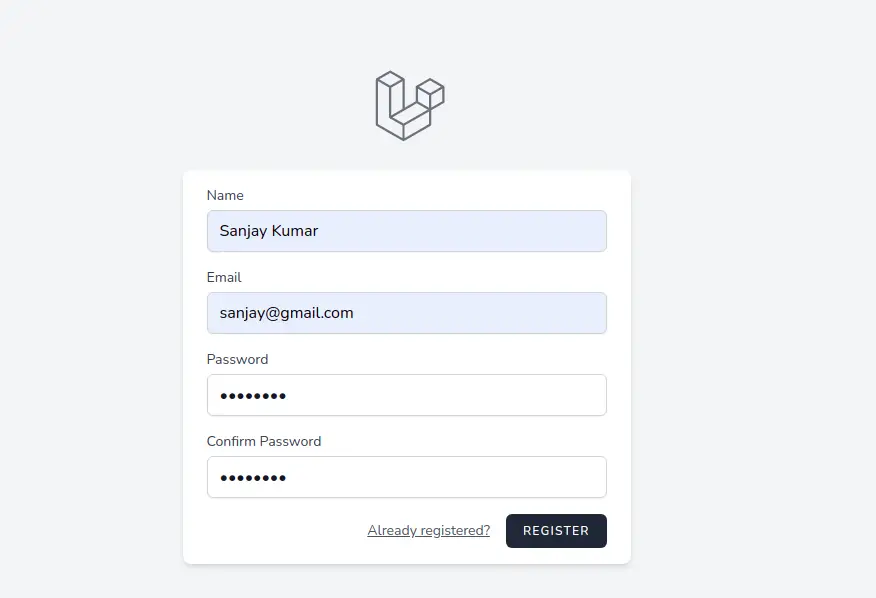
Login Page
URL – 127.0.0.1:8000/login
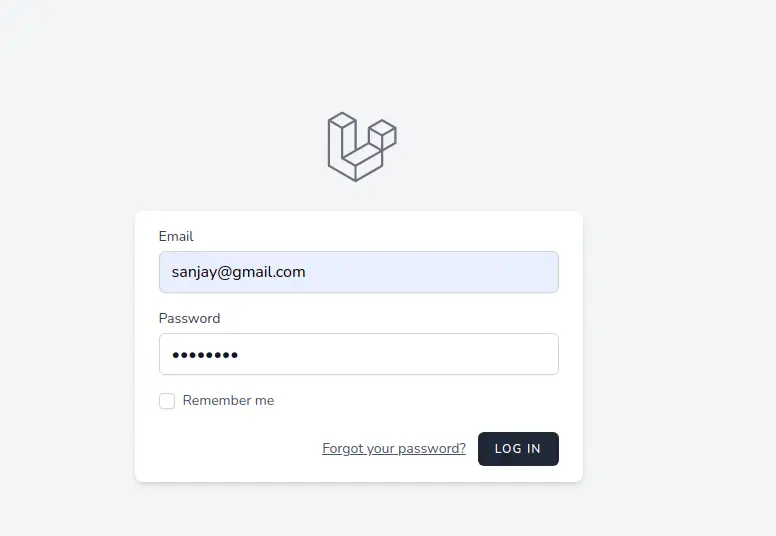
Dashboard Page
URL – 127.0.0.1:8000

We hope this article helped you to learn about Laravel 9 Authentication Scaffolding with Breeze in a very detailed way.
Online Web Tutor invites you to try Skillshike! Learn CakePHP, Laravel, CodeIgniter, Node Js, MySQL, Authentication, RESTful Web Services, etc into a depth level. Master the Coding Skills to Become an Expert in PHP Web Development. So, Search your favourite course and enroll now.
If you liked this article, then please subscribe to our YouTube Channel for PHP & it’s framework, WordPress, Node Js video tutorials. You can also find us on Twitter and Facebook.
